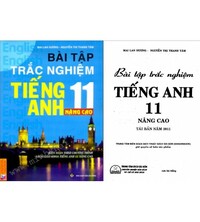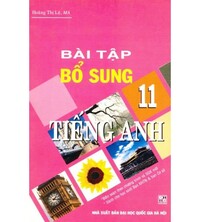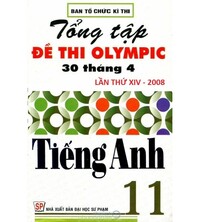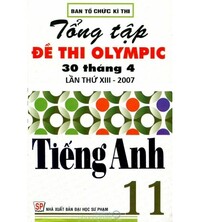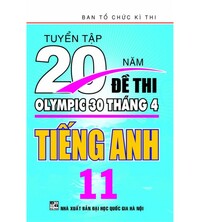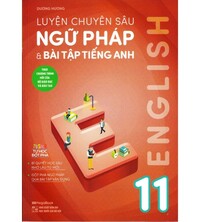Tiếng Anh 11 Vocabulary Expansion Unit 8
1. Complete the sentences with the words below. 2. Complete the sentences with the words below. 3. Complete the sentences with the words below. 4. Write the correct form of the words in brackets. 5. a) Mark the letter A, B, C or D to indicate the word CLOSEST in meaning to the underlined word. b) Mark the letter A, B, C or D to indicate the word OPPOSITE in meaning to the underlined word.
Bài 1
1. Complete the sentences with the words below.
(Hoàn thành các câu với các từ dưới đây.)

1 Eating garlic is helpful in strengthening your _________.
2 You can make soothing tea from ginger _________.
3 Drink turmeric tea if you have pain from the_________ in your ankles and knees.
4 Garlic is a natural _________ for many health problems.
5 Jackie has _________ pain and needs pain relief.
6 _________ is a very painful disease.
7 Garlic helps _________ the body's defence against disease.
8 She had a terrible _________ from getting cut with a tree branch.
9 Honey is a natural healer. It helps destroy _________ and heal wounds.
Phương pháp giải:
*Nghĩa của từ vựng
remedy (n): biện pháp chữa trị
root (n): nguồn gốc
swelling (n): sưng tấy
joint (n): khớp
arthritis (n): viêm khớp
immune system (n): hệ miễn dịch
wound (n): vết thương
bacteria (n): vi khuẩn
boost (v): tăng
Lời giải chi tiết:

1 Eating garlic is helpful in strengthening your immune system.
(Ăn tỏi rất hữu ích trong việc tăng cường hệ thống miễn dịch của bạn.)
2 You can make soothing tea from ginger root.
(Bạn có thể pha trà nhẹ từ củ gừng.)
3 Drink turmeric tea if you have pain from the swelling in your ankles and knees.
(Uống trà nghệ nếu bạn bị đau do sưng ở mắt cá chân và đầu gối.)
4 Garlic is a natural remedy for many health problems.
(Tỏi là một phương thuốc tự nhiên cho nhiều vấn đề sức khỏe.)
5 Jackie has joint pain and needs pain relief.
(Jackie bị đau khớp và cần giảm đau.)
6 Arthritis is a very painful disease.
(Viêm khớp là một bệnh rất đau đớn.)
7 Garlic helps boost the body's defence against disease.
(Tỏi giúp tăng cường khả năng phòng vệ của cơ thể chống lại bệnh tật.)
8 She had a terrible wound from getting cut with a tree branch.
(Cô ấy bị một vết thương khủng khiếp do bị cành cây cứa vào.)
9 Honey is a natural healer. It helps destroy bacteria and heal wounds.
(Mật ong là một phương thuốc tự nhiên. Nó giúp tiêu diệt vi khuẩn và chữa lành vết thương.)
Bài 2
2. Complete the sentences with the words below.
(Hoàn thành các câu với các từ dưới đây.)

1 Put the roots in water and _________ them.
2 Dried _________, like mint, can be good for making tea.
3 The _________ of the medicine involves a mixture of plants.
4 Take this knife and _________ the onion into small pieces.
5 They must _________ the medicine by mixing different parts of plants on the
stove.
6 Traditional medicines can help treat diseases such as _________.
7 Use this woodblock to _________ the cinnamon stick into powder.
Phương pháp giải:
*Nghĩa của từ vựng
herbs (n): các loại thảo mộc
preparation (n): sự chuẩn bị
chop (v): cắt
grind (v): nghiền
brew (v): ủ
boil (v): đun sôi
diabetes (n): bệnh tiểu đường
Lời giải chi tiết:

1 Put the roots in water and boil them.
(Cho rễ vào nước và đun sôi.)
2 Dried herbs, like mint, can be good for making tea.
(Các loại thảo mộc khô, như bạc hà, có thể dùng để pha trà rất tốt.)
3 The preparation of the medicine involves a mixture of plants.
(Việc chuẩn bị thuốc liên quan đến hỗn hợp các loại thực vật.)
4 Take this knife and chop the onion into small pieces.
(Lấy con dao này và cắt hành tây thành từng miếng nhỏ.)
5 They must brew the medicine by mixing different parts of plants on the
stove.
(Họ phải pha thuốc bằng cách trộn các bộ phận khác nhau của cây trên
cái lò.)
6 Traditional medicines can help treat diseases such as diabetes.
(Các loại thuốc truyền thống có thể giúp điều trị các bệnh như tiểu đường.)
7 Use this woodblock to grind the cinnamon stick into powder.
(Dùng mộc bản này để nghiền thanh quế thành bột.)
Bài 3
3. Complete the sentences with the words below.
(Hoàn thành các câu với các từ dưới đây.)

1 The beginning of the 20th century was an important _________ in human history in many ways.
2 Having access to high-quality food and healthcare helps extend a person's _________ significantly.
3 People suffering from _________ often lose the use of their arms or legs.
4 Cleaning a wound helps to prevent _________ from occurring.
5 Diet is an important _________ that can impact our overall health.
6 In some poor countries, the average _________ is as low as 54.
7 _________ used to be a life-threatening disease that was caused by variola virus.
Phương pháp giải:
*Nghĩa của từ vựng
lifespan (n): tuổi thọ
turning point (n): bước ngoặt
smallpox (n): bệnh đậu mùa
polio (n): bệnh bại liệt
infection (n): sự nhiễm trùng
life expectancy (n): tuổi thọ trung bình
factor (n): nhân tố
Lời giải chi tiết:

1 The beginning of the 20th century was an important turning point in human history in many ways.
(Đầu thế kỷ 20 là một bước ngoặt quan trọng trong lịch sử loài người trên nhiều phương diện.)
2 Having access to high-quality food and healthcare helps extend a person's lifespan significantly.
(Được tiếp cận với thực phẩm chất lượng cao và dịch vụ chăm sóc sức khỏe giúp kéo dài tuổi thọ của một người một cách đáng kể.)
3 People suffering from polio often lose the use of their arms or legs.
(Những người bị bại liệt thường mất khả năng sử dụng tay hoặc chân.)
4 Cleaning a wound helps to prevent infection from occurring.
(Làm sạch vết thương giúp ngăn ngừa nhiễm trùng xảy ra.)
5 Diet is an important factor that can impact our overall health.
(Chế độ ăn uống là một yếu tố quan trọng có thể ảnh hưởng đến sức khỏe tổng thể của chúng ta.)
6 In some poor countries, the average life expectancy is as low as 54.
(Ở một số nước nghèo, tuổi thọ trung bình thấp khoảng 54.)
7 Smallpox used to be a life-threatening disease that was caused by variola virus.
(Bệnh đậu mùa từng là một căn bệnh đe dọa tính mạng do vi rút variola gây ra.)
Bài 4
4. Write the correct form of the words in brackets.
(Viết dạng đúng của các từ trong ngoặc.)
1 Jack can't join the basketball practice tomorrow because he's got a knee _________. (INJURE)
2 Ginger is a good _________ for a sore throat. (TREAT)
3 That cut looks bad; you might have an _________. (INFECT)
4 The good news is that this disease is _________ with drugs. (TREAT)
5 I have an _________ ankle, so I can't walk a lot. (INJURE)
6 Free healthcare helps protect against _________ diseases. (INFECT)
Phương pháp giải:
*Nghĩa của từ vựng
1. infect (v): lây nhiễm
=> infection (n): nhiễm trùng
=> infectious (adj): truyền nhiễm
2. injure (v): làm bị thương
=> injured (adj): bị thương
=> injury (n): chấn thương
3. prevent (n): ngăn chặn
=> prevention (n): ngăn chặn
4. treat (v): chữa trị
=> treatment (n): cách chữa trị
=> treatable (adj): có thể điều trị được
Lời giải chi tiết:

1 Jack can't join the basketball practice tomorrow because he's got a knee injury. (INJURE)
(Jack không thể tham gia buổi tập bóng rổ vào ngày mai vì anh ấy bị chấn thương đầu gối.)
- Sau mạo từ “a” cần một cụm danh từ.
injury (n): chấn thương
2 Ginger is a good treatment for a sore throat. (TREAT)
(Gừng là một phương pháp điều trị tốt cho chứng đau họng.)
- Sau tính từ “good” (tốt) cần một danh từ.
treatment (n): cách chữa trị
3 That cut looks bad; you might have an infection. (INFECT)
(Vết cắt đó trông tệ; bạn có thể bị nhiễm trùng.)
- Sau mạo từ “a” cần một danh từ.
infection (n): nhiễm trùng
4 The good news is that this disease is treatable with drugs. (TREAT)
(Tin tốt là bệnh này có thể điều trị bằng thuốc.)
- Sau động từ tobe “is” cần một tính từ.
treatable (adj): có thể chữa trị
5 I have an injured ankle, so I can't walk a lot. (INJURE)
(Tôi bị thương ở mắt cá chân, vì vậy tôi không thể đi lại nhiều.)
- Trước danh từ “ankle” (mắt cá chân) cần một tính từ.
injured (adj): bị thương.
6 Free healthcare helps protect against infectious diseases. (INFECT)
(Chăm sóc sức khỏe miễn phí giúp bảo vệ chống lại các bệnh truyền nhiễm.)
- Trước danh từ “diseases” (bệnh) cần một tính từ.
infectious (adj): truyền nhiễm
a
5. a) Mark the letter A, B, C or D to indicate the word CLOSEST in meaning to the underlined word.
(a) Đánh dấu vào chữ cái A, B, C hoặc D để chỉ từ gần nghĩa nhất với từ gạch chân.)
1 Use some honey to help heal your wound.
A treat
B repair
C cure
D fix
2 Eating raw garlic can help prevent many diseases.
A bacteria
B pains
C aches
D illnesses
Lời giải chi tiết:

1 Use some honey to help heal your wound.
(Sử dụng một ít mật ong để giúp chữa lành vết thương của bạn.)
A treat (v): t điều trị
B repair (v): sửa chữa
C cure (v): chữa bệnh
D fix (v): sửa
help (v): giúp = treat (v)
=> Chọn A
2 Eating raw garlic can help prevent many diseases.
(Ăn tỏi sống có thể giúp ngăn ngừa nhiều bệnh tật.)
A bacteria (n): vi khuẩn
B pains (n): đau
C aches (n): nhức
D illnesses (n): bệnh tật
diseases (n): bệnh = illnesses
=> Chọn D
b
b) Mark the letter A, B, C or D to indicate the word OPPOSITE in meaning to the underlined word.
(b) Đánh dấu chữ cái A, B, C hoặc D để chỉ từ trái nghĩa với từ gạch chân.)
1 It's important to understand what prevents cancer.
A reduces
B makes
C causes
D benefits
2 Derrick makes smart food choices when he eats.
A strong
B poor
C weak
D delicious
Lời giải chi tiết:

1 It's important to understand what prevents cancer.
(Điều quan trọng là phải hiểu cái gì ngăn ngừa ung thư.)
A reduces (v): giảm
B makes (v): làm
C causes (v): gây ra
D benefits (v): lợi ích
prevent (v): ngăn chặn
=> Chọn C
2 Derrick makes smart food choices when he eats.
(Derrick lựa chọn thực phẩm thông minh khi ăn.)
A strong (adj): khỏe
B poor (adj): nghèo nàn
C weak (adj): yếu
D delicious (adj): ngon
smart (adj): thông minh
=> Chọn B
Search google: "từ khóa + timdapan.com" Ví dụ: "Tiếng Anh 11 Vocabulary Expansion Unit 8 timdapan.com"

